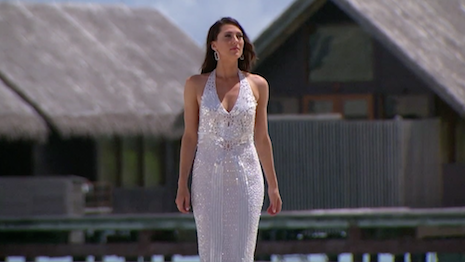- About
- Subscribe Now
- New York,
June 4, 2019

 The 14th season finale of The Bachelorette was filmed at a Maldives resort. Image credit: Shangri-La
The 14th season finale of The Bachelorette was filmed at a Maldives resort. Image credit: Shangri-La
As the amount of content and advertising exponentially increases, product placement can still be an effective way to reach consumers.
According to new research from the INFORMS journal Marketing Science, verbal product placements have the most success at driving online engagement around a brand. Luxury brands including BMW, Land Rover and Shangri-La have previously used product placement in television and film to get consumers' attention.
“It’s not enough for luxury brands to be visually present in a program,” said David Schweidel, study author and professor of marketing at Emory University’s Goizueta Business School. “To reap the benefits of product placement, the brands need to be mentioned.
“These marketing efforts should be combined with a concerted social media campaign to ensure that the increased word of mouth is not squandered,” he said.
The study includes more than 2,800 product placements for 99 brands that aired during the fall 2015 television season. Researchers measured the volume of online word-of-mouth mentioning of the brand and traffic to the brand’s Web site following the product placement.
Product positioning
Ford, Chevrolet and Microsoft were among the brands with the most product placements during the study’s timeframe.
Spending on product placements is estimated to have surpassed $10 billion in 2018.
Effective product placement fits into a narrative, and can be less obtrusive to consumers than traditional television advertising. On the other hand, product placements that seem out of place or are preceded by a commercial can backfire.
The HBO series Sex and the City was known for frequent mentions of luxury brands.
Since many consumers now multitask on their smartphones while viewing television, online engagement was used to measure the response to product placement.
Researchers identified different categories of product placement, ranging from implied visual placement to audiovisual placement, in which a product is clearly seen and mentioned.
Sixty-six percent of product placements are direct visual placements, while only 3 percent are audiovisual. Placements lasted for an average of one minute.
In terms of audiovisual placements, 22 percent involved a fictional character interacting with a product and 45 percent featured a real character, such as a television host, interacting with a product. These placements also had the longest duration at an average of 101 seconds.
Because of the immediacy of the platform, Twitter posts mentioning the featured products and brands were tallied for the study's online word-of-mouth data. Online browsing metrics were also evaluated.
On average, brands saw a 13 percent increase in Web traffic and a 16 percent boost in online word-of-mouth in the 10 minutes post-placement when compared to the 10 minutes prior to placement.
Audiovisual placements lead to the most increased engagement online. Online word-of-mouth and Web traffic grew 81 and 28 percent, respectively.
Direct visual placements had the least impact on online engagement, with word-of-mouth increasing less than 10 percent post-placement.
Land Rover has a role on a Hulu series. Image courtesy of Land Rover
Many luxury brands receive organic mentions from television writers, but Prada, Gucci and Chanel are the labels who have been referenced the most.
Luxury fashion platform Winkelstraat.nl analyzed more than 100 popular TV shows with at least 50 episodes, 30 of which were broadcast after 2000. Of the top 12 shows with the most brand mentions, almost all cater largely to a female audience (see story).
Luxury product placement
Automakers are among the brands most likely to leverage product placement. Even luxury vehicles can be seamlessly woven into television narratives while still drawing attention to their performance and features.
Set in the near-future, Hulu’s drama series “The First” features a series of futurized Range Rover Sports created by the Land Rover Design team. While the show’s Range Rovers are creative props that will not be available for purchase, the product placement exposes the car brand to a wide audience (see story).
Last summer, German automaker BMW returned to the silver screen as the exclusive automotive partner for the newest installment of the “Mission: Impossible” film franchise. BMW cars and motorcycles have appeared in the action series since 2011 (see story).
In 2018, the season finale of ABC’s “The Bachelorette” was filmed at Shangri-La Villingili Resort and Spa, Maldives. Exposure from the reality show and subsequent press coverage has the potential to attract new guests to the Shangri-La location, and others around the globe.
With millions of viewers, pitching romantic destinations for The Bachelor franchise is a big business (see story).
“The key is integration,” Mr. Schweidel said. “Audiovisual and verbal placements must be integrated into the story more so than visual placements, which may simply occur with the camera passing over the product.
“We see that post-placement advertising can boost online word-of-mouth about the featured brand,” he said
Share your thoughts. Click here